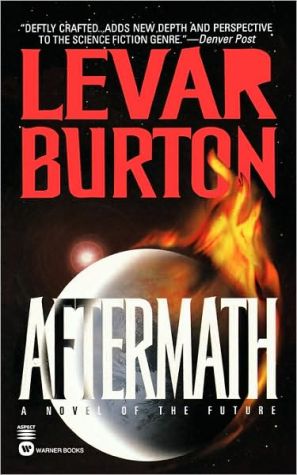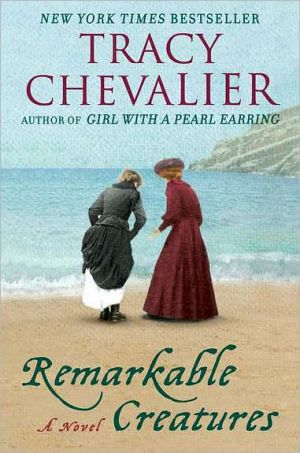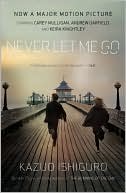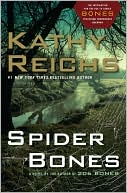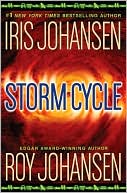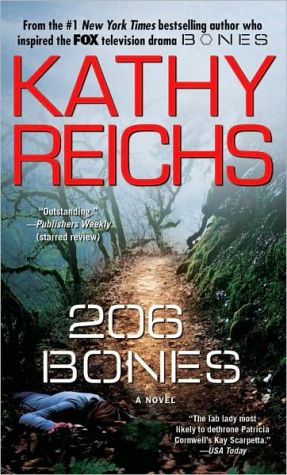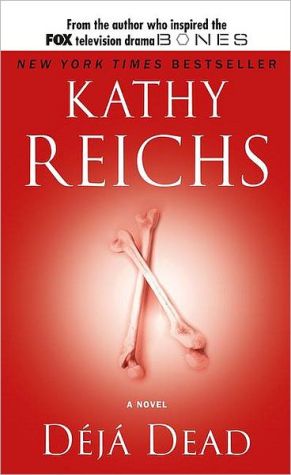Aftermath
— "Aftermath" (Aspect, 1/97) had a first hardcover printing of 35,000 copies, and was a Wordstock bestseller.\ — LeVar Burton is extremely well-known, both for his role as Kunta Kinte in Alex Haley's Roots, and for his long-running as Lt. Cmdr. Geordi LaForge on the hugely popular Star Trek "RM": The Next Generation television series.\ — Burton toured extensively to promote the hardcover, generating enormous excitement.\ — Also available as a Time warner AudioBook "TM" .\ The United States of...
Search in google:
— "Aftermath" (Aspect, 1/97) had a first hardcover printing of 35,000 copies, and was a Wordstock bestseller.— LeVar Burton is extremely well-known, both for his role as Kunta Kinte in Alex Haley's Roots, and for his long-running as Lt. Cmdr. Geordi LaForge on the hugely popular Star Trek "RM": The Next Generation television series.— Burton toured extensively to promote the hardcover, generating enormous excitement.— Also available as a Time warner AudioBook "TM" .The United States of 2019 is a very different place. Economic depression, an enormous earthquake, and the assassination of a black President-elect have turned the country into a war zone. Four people, each as different and troubled as the next, are the nation's last hope. But can they overcome the devastation and build a new world?"This tale of people acting as bad as they want to be vs. others who just want to do the right thing marks an entertaining debut". — Cleveland Plain Dealer"Burton's writing is solid and poised". — Denver Post"Burton is only in the initial stage of his writing career...but he has already mastered the art of keeping readers turning pages". — Booklist"Epic, along the lines of The Stand; spiritual, along the lines of The Seven Arrows. LeVar Burton created a world in which devastation leads to the possibility of redemption. I highly recommend this book!" — Whoopi GoldbergPublishers WeeklyAnother Star Trek alumnus gets bitten by the writing bug. Here, it's Burton, who played Lt. Cmdr. Geordi LaForge on Star Trek: The Next Generation. His fiction debut is a terribly earnest and straightforward novel about the horrors that occur after America is shattered by a breakdown in race relations. Dr. Rene Reynolds is the inventor of the Neuro-Enhancer, a device with almost mystical healing abilities that also creates telepathic powers in its wearers. After Reynolds demonstrates the device to financiers, she is kidnapped-but not before she desperately thrusts the only existing copies of her computer disks into the hands of a homeless man, Leon Cane, whose life was shattered during the race riots. When Reynolds sends out a telepathic call for help, Cane, Amy LaDue, a plucky child living on the streets, and Jacob Fire Cloud, a Lakota medicine man with a vision, head toward Chicago to aid her and to save the world from destruction. Burton's workmanlike prose is sufficient for the task of displaying his characters' virtues, but the world he builds is muddled and less than credible. His name recognition, however, along with the novel's humane and caring moral message, should ensure respectable sales. Author tour. (Jan.)
Aftermath\ \ By LeVar Burton \ Warner Aspect\ Copyright © 1998 LeVar Burton\ All right reserved.\ ISBN: 0-446-60501-8 \ \ \ Chapter One\ Leon Cane lifted the lid of the metal Dumpster and peered inside. He wasn't looking for food; he still had a few cans of tuna stashed away in the wooden crate he called home. Instead he was searching for reading material-books, magazines, newspapers-something to relieve the boredom that came with being homeless. On a good day he might come across a discarded newspaper or a dog-eared novel. Once he had found a copy of Scientific American, but he had thrown it away, the bitter memories too much to endure. Luck wasn't with him today, however, for the Dumpster was empty. Disappointed, he lowered the lid and continued down the deserted alleyway, the soles of his oversized shoes clopping loudly on the pavement. Like the books he read, the shoes had also been found in a Dumpster. They were two sizes too big, and rubbed his feet when he didn't remember to line them with newspaper, but he couldn't complain. A lot of people he knew didn't even have shoes. They went barefoot, risking cuts and infections, or wrapped their feet in plastic bags and strips of cloth. \ Aware of the noise he was making, Leon slowed his pace. The back streets of war-ravaged Atlanta were dangerous enough without letting everybody know you were coming. Silence was the rule if you wanted to survive. Stealth. The thieves and murderers knew it. They waited like spiders in the shadowy darkness of doorways and burned-out vehicles, setting traps for their victims. Mercy and compassion were never offered, only pain and sometimes death.\ But for every thief and cutthroat that skittered about in the blackness, there were a dozen people who had survived the riots and race war and wanted nothing more than to put the hurt behind them and begin the healing. For the poor and homeless, race was no longer an issue, no longer a reason to hate. When a person was cold and starving it mattered not if the helping hand offered was white, black, yellow or red. In the months following the war, thousands of shantytowns and tiny tent communities sprang up across the country in fields and city parks, and along deserted highways and country roads. Noisy, crowded affairs, often lacking fresh water and sanitation facilities, these new communities were a mixture of refugee camp, flea market and carnival. They were a place to go when companionship was desired or supplies needed, a place to share a joke, have a drink or find a shoulder to cry on.\ At these makeshift communities, everything one needed could be had for a price: food, clothing, drugs, even sex. Some of the ones run by gangs offered guarded sleeping quarters where a person could enjoy a good night's rest without fear of being robbed. Others featured gaming tents and casinos, where robbery was a way of life. Either way, the same rule still applied: no one was ever turned away because of the color of their skin. Leon wiped the sweat from his forehead and looked up. The afternoon sky was a hazy gray. To the south vertical towers of cumulonimbus thunderclouds rose like snowcapped mountains high above the horizon, threatening rain. He stood and watched the clouds for a moment, lost in his thoughts, feeling a twinge of the same joy and wonder he had once felt as a much younger man.\ Leon had grown up in the town of Millvat, Pennsylvania, just across the Ohio River from the city of Pittsburgh. His father worked in a steel mill. His mother was a seamstress, baby-sitting on the weekends to supplement the family income. With three growing boys to feed there never seemed to be enough money. But his parents scrimped and saved, sacrificing so that Leon and his two older brothers never had to do without.? His mother, Jewel, instilled in Leon a strong sense of self and her passion for learning. She impressed upon him at an early age that in order to compete successfully with white men he would need to be similarly educated. By scrimping and saving, Leon's parents set aside enough money to send both him and his brother James to college, while Leon's older brother Richard followed in the footsteps of their father and went to work in a steel mill.\ Leon graduated from Colorado State University with a degree in atmospheric science. After graduation, he had gone to work at the Center for Clouds, Chemistry and Climate, nicknamed C4, in La Jolla, California. He and a team of university, government and industrial researchers worked side by side to study the radiative effects of clouds upon the earth's surface, gathering their information from satellites, sensors and spy planes. He had been working at the Center for a little over two years when he met Vanessa Campbell, a registered nurse at the La Jolla Medical Center. She was tall and slender, extremely beautiful, with a smile that could melt glaciers and cause a lion and a lamb to lie down together. They dated, sharing a passion for the theater, old movies and moonlight walks along the beach.\ They also shared a love for creating amateur works of art. Vanessa's speciality was watercolor paintings of wildflowers. She was very talented, several of her paintings winning awards and honorable mentions at local art shows. On picnics together in the park Leon would carry the food and drink, while she brought along a fresh canvas and her sketch pad. After eating, he would lie on the grass and watch her paint, or close his eyes and listen to her hum different songs. She always hummed when she worked, usually something lively and flowing like the images she captured on canvas.? Leon wasn't a painter. His artistic talents birthed in the bowls and pots he created on a pedal-powered potter's wheel. He loved doing pottery; there was something satisfying and almost magical about it: the smell and feel of the fresh clay when he kneaded out the air bubbles, the thunk-thunk of the wheel as his hands carefully gave life to a spinning bowl or pot, the heat from the kiln, which was always two degrees hotter than hell. Vanessa used to tease him that his pottery satisfied a primitive male urge somewhat akin to sexual desire. Maybe so, but she had no qualms about adding her feminine touch to his primitive urges with a well-placed buttercup or two.\ They had been dating for only six months when Leon and Vanessa decided to get married, both equally certain that they had found the person they wanted to share their life with. A few weeks later they were married at one of the many twenty-four-hour wedding chapels in Las Vegas, Nevada. Leon's mother had been upset that they didn't have a formal church wedding, but she quickly forgave them when he flew her and his father out to California for a visit. One year and three months after the wedding, give or take a few days, Vanessa gave birth to Anita Luanne Cane, the most beautiful little girl in the entire world-at least in Leon's opinion.\ Although Leon's work at C4 figuratively put his head in the clouds, his dreams went way beyond that, out past the strato-sphere and monosophere, to the great vastness of space. He knew humanity's future lay in space exploration and wanted very much to be a part of that future. His dream came true when an old friend introduced him to the head of the meteorology department at NASA. Four months later, Leon was offered a job with the space administration. It was an offer he did not turn down.\ From a rented condo in La Jolla, Leon and his family moved into a modest three-bedroom home, just five blocks from the Atlantic Ocean, in Cocoa Beach, Florida. His job at NASA was to study meteorological and infrared information beamed back to earth from weather satellites to determine if space shuttles, their payloads crammed with parts and supplies for Space Station Alpha, could lift off according to schedule. With launches coming every three weeks, he had been kept quite busy. But he didn't mind: the job was rewarding and the pay terrific.\ During his first six months working for NASA, Leon had noticed peculiar disturbances in the earth's weather patterns shortly after the launch or reentry of a space vehicle. It seemed every time a shuttle or rocket went up, or came back down, someplace caught hell with violent storms, tornados, even floods. At first he thought it was nothing more than a coincidence. After all, how could a rocket or shuttle launched in Florida possibly affect weather conditions halfway around the world? But the more he researched the matter, the more he became convinced there was indeed some sort of connection. The atmospheric disturbances could be traced all the way back to the earliest launches of the 1950s.\ Leon theorized that the different layers of atmosphere surrounding the planet-a soupy mixture of nitrogen, oxygen, argon, carbon dioxide, hydrogen, ozone, methane and a dozen other elements-behaved less as a gas and more as a semi-solidified gelatinous substance when compressed by the earth's gravitational field. Ripples were created in the upper atmosphere during the exit or reentry of a space vehicle, much like the ripples on the surface of a pond when a stone is tossed into the water. These ripples traveled outward as invisible gravitational waves, disrupting weather patterns in places where the layers of atmosphere were thinner.\ He took his findings to his immediate supervisor, but was dismissed with a laugh and a wave of a hand. Disheartened, Leon brought his report home and tossed it on his desk, where it stayed until he decided to go public with his findings. Afraid he was placing his career in jeopardy, Vanessa tried to talk him out of his decision. But Leon refused to listen, convinced he was doing the right thing. Ultimately, it was Leon's conscience that led him to share his findings with the press. His report appeared as "Do Space Launches Affect Our Weather?" in the March 2011 issue of Scientific American. It was a good article, well written, backed up by dates, figures and facts. The results were disastrous.\ Radical political organizations, opposed to the space program and looking for a reason to shut it down, jumped on Leon's article as a means to pressure Congress into giving NASA the axe. His article was beamed around the world by way of the Internet, with dozens of news reporters and talk show hosts twisting the report into a prophecy of doom. Once the fire was lit it could not be stopped. Leon was subpoenaed to testify about his findings before a congressional committee task force, as were several of his co-workers, his supervisor and the head of the Space Administration. Once they got started, the hearings lasted for four weeks and were carried live on national television, with highlights and commentary presented each night on the six and eleven o'clock news. Congress and the President of the United States, already struggling with a failing economy, inflation and racial tensions, saw the situation as a chance to direct public attention and concern elsewhere. The shuttle program was suspended, as were any future plans for the space station. Almost overnight, Leon had gone from being a simple scientist who loved his job to the Antichrist of the space program. With the suspension of the shuttle program, thousands of NASA employees were laid off. Thousands more were laid off by multinational corporations whose business centered around shuttle launches, satellite deployment and space technologies. The economic impact on the Florida communities of Cocoa Beach and Titusville was devastating. Within only a few weeks, they became little more than ghost towns. Leon was also laid off, but he lost much more than just his job.\ Three weeks after Congress gave the space program the axe, someone threw two firebombs through his living room window. His wife and their three-year-old daughter died in the flames that engulfed his home. Leon's mother had tried to teach him how to share her love for God, but even as a child, Leon found it impossible to respect a God who could allow the world to be so full of pain. Science had become his religion. Now, he had nothing. Homeless, alone, his heart sick with grief, Leon had left Florida with the intention of returning to Pennsylvania to see his mother. His father had died the previous year from a heart attack, and his brothers were living in other towns, but his mother still lived in the same house Leon had grown up in. Both the house and his mother represented happier times, times of comfort and simplicity.\ But Leon never made it to Millvat; he got only as far as Atlanta, Georgia. On November 13, 2012, he arrived in the city of Atlanta with only the clothes on his back and twenty dollars in his pocket, arriving just in time to witness the riots following the death of President-elect Lawrence Everette.\ He had watched as thousands of angry people ran through the streets, smashing windows, overturning cars and setting buildings on fire. Downtown Atlanta became a war zone as police officers squared off against armed protesters. Hundreds of people were killed in the fighting; many more were wounded and maimed. The gutters ran red with their blood, and the night was filled with screams. He hadn't gotten caught up in the madness that swept the city during the riots, hadn't looted, robbed or even raised his fist in anger. The truth was he didn't care. Life no longer had much meaning for him. His world had become an empty wooden crate, one meal a day-if he was lucky-and a tattered, faded picture of the wife and daughter he had lost.\ Leon Cane lowered his gaze, pushing back the memories that always brought tears to his eyes. He stuffed his hands into his pants pockets and continued slowly down the alley, searching for something to read to kill the pain.\ (Continues...)\ \ \ \ \ Excerpted from Aftermath by LeVar Burton Copyright © 1998 by LeVar Burton . Excerpted by permission.\ All rights reserved. No part of this excerpt may be reproduced or reprinted without permission in writing from the publisher.\ Excerpts are provided by Dial-A-Book Inc. solely for the personal use of visitors to this web site. \ \
\ From Barnes & NobleIt's not often that I find myself delighted to encounter first novels' flaws, but that was exactly the case with Aftermath. On the one hand, it is quite simply a terrific book -- a solid story with an engaging cast of characters, and a voice that is all-too-unique in our genre. On the other hand, it does have few (only a few) first-book flaws -- but to my eye, those only serve to enhance the experience, because this book was written by Levar Burton. These days, it's not so unusual to see a celebrity's name on a book, but Aftermath is a genuine rarity: a celebrity book actually written by the celebrity -- and it's a darn good read, too. And perhaps that's not too surprising, after all. I always enjoyed Geordi LaForge, but the best role I ever saw Burton play was when he hosted "Reading Rainbow" on public television. He convinced me then that his love for the written word was genuine, and I'm very much looking forward to reading more of his work. \ —Larry Segriff\ \ \ \ \ \ Publishers Weekly - Publisher's Weekly\ Another Star Trek alumnus gets bitten by the writing bug. Here, it's Burton, who played Lt. Cmdr. Geordi LaForge on Star Trek: The Next Generation. His fiction debut is a terribly earnest and straightforward novel about the horrors that occur after America is shattered by a breakdown in race relations. Dr. Rene Reynolds is the inventor of the Neuro-Enhancer, a device with almost mystical healing abilities that also creates telepathic powers in its wearers. After Reynolds demonstrates the device to financiers, she is kidnapped-but not before she desperately thrusts the only existing copies of her computer disks into the hands of a homeless man, Leon Cane, whose life was shattered during the race riots. When Reynolds sends out a telepathic call for help, Cane, Amy LaDue, a plucky child living on the streets, and Jacob Fire Cloud, a Lakota medicine man with a vision, head toward Chicago to aid her and to save the world from destruction. Burton's workmanlike prose is sufficient for the task of displaying his characters' virtues, but the world he builds is muddled and less than credible. His name recognition, however, along with the novel's humane and caring moral message, should ensure respectable sales. Author tour. (Jan.)\ \ \ VOYALeon Cane, an ex-NASA scientist reduced to homelessness after the collapse of the space program; Amy Ladue, a twelve-year-old living in the streets, still searching for her dead mother; and Jacob Fire Cloud, a LaKota medicine man, team up to save a kidnapped doctor, Rene Reynolds. When Rene and her Neuro-Enhancer, a machine that enables the body to cure itself of virtually any disease, are snatched by a rival doctor, a side effect of the device allows Rene to call for help telepathically. Her three unlikely saviors travel halfway across the country in response to her cries to orchestrate her rescue. In a devastated America, where racial hatred has culminated in a second civil war and earthquakes have leveled major cities, public transportation and communication are sporadic at best and millions are homeless. But even when civilization is reduced to ruins, Burton assures us there are still good people willing to help each other. This is a hard one to call. Burton's name is bound to be a draw for YAs who are Star Trek fans, but there is no exciting space science fiction here. There is certainly raw, adult detail: Amy's near rape at the hands of a vicious old man, and the appalling "skinners," men who harvest African Americans for their skin and organs. And yet, the plot has a naiveté and simplicity reminiscent of a series-type adventure story-average people succeeding and triumphing in an almost impossible situation. Young adults will probably ask for this one; they may, however, be surprised by what they get. VOYA Codes: 4Q 4P S (Better than most, marred only by occasional lapses, Broad general YA appeal, Senior High-defined as grades 10 to 12).\ \ \ \ \ Library JournalAmerican civilization crumbles after a civil war pitting blacks against whites and a devastating earthquake. Salvation resides in the hands of a black woman scientist, Dr. Rene Reynolds, inventor of a neuroenhancer that cures all diseases. When she is kidnapped, her telepathic cry for help reaches three people who travel across the country to save her. Star TrekR actor Burton's characterizations are shallow, transitions between events betray a TV-like impatience, and the plot was rendered better in Jerry Pournelle and Larry Niven's Lucifer's Hammer (Fawcett, 1985). Buy only on demand.\ \ \ \ \ Inquirer PhiladelphiaA thoroughly entertaining debut.\ \ \ \ \ Kirkus ReviewsActor Burton (Roots, Star Trek: The Next Generation, etc.) debuts with a novel set in a chaotic 21st-century US, where the assassination of the first African-American president and a disastrous earthquake centered on the New Madrid fault have precipitated social and economic collapse and civil war. Dr. Rene Reynolds has invented the Neuro-Enhancer, a device that helps the body boost its immune system to banish all disease. But rival Dr. Randall Sinclair—he has ties to monstrous fascist militias who roam the countryside, abducting nonwhite citizens for use as involuntary organ donors—having decided that the Neuro-Enhancer must be suppressed kidnaps Rene and her prototype device. As a side effect of testing the machine on herself, however, Rene finds she has psychic powers and yells for help telepathically. Three people hear the summons and are drawn into a rescue attempt: derelict and former NASA scientist Leon Cane; orphan Amy Ladue (she thinks the voice in her head is her mother's); and Lakota shaman Jacob Fire Cloud, whose vision quest has shown him how White Buffalo Woman will prevent the terrible Great Shaking.\ Set forth in assured prose, with a well-developed plot permeated by an almost palpable sadness at the folly of race hatred. With this wise, above-average debut, Burton is poised to tackle bigger, more ambitious themes.\ \ \
